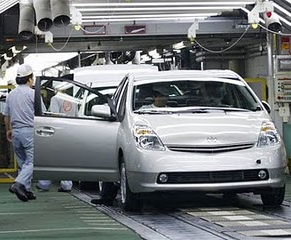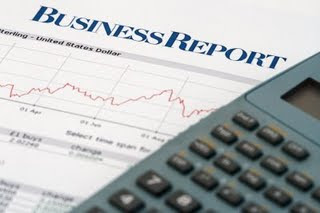 What follows is an unaltered copy of Federal Reserve Chairman Bernanke's Jackson Hole speech on August 26, 2011. We offer this timely redistribution to our readers, due to the great importance assigned to it by financial markets.
What follows is an unaltered copy of Federal Reserve Chairman Bernanke's Jackson Hole speech on August 26, 2011. We offer this timely redistribution to our readers, due to the great importance assigned to it by financial markets.
Commentary here by Markos Kaminis: It is our opinion that the absence of constructive action by the Fed, which was somewhat begged for by markets, combined with ongoing economic deterioration and the potential impact of Hurricane Irene on the economy will return markets to bearish leaning, and renew gold's strength, absent the fervor of bubble-blowing speculators initially. That said, the Fed's plan for a two-day meeting in September indicates some action could occur at that time, but the specter of dissension among Fed Board members counters that hope as well. And besides, the Fed may simply be unable to stop the bleeding, as consumer, investor and purchasing managers have been frozen by uncertainty exacerbated by Washington. At this point, economic contraction may be inevitable for Q3 and recession possible for the second half of 2011.
Relative tickers: NYSE: DIA, NYSE: SPY, Nasdaq: QQQ, NYSE: DOG, NYSE: SDS, NYSE: QLD, NYSE: NYX, Nasdaq: NDAQ, NYSE: ICE, Nasdaq: ETFC, Nasdaq: SCHW, Nasdaq: AACC, NYSE: AMG, NYSE: AMP, Nasdaq: AMTD, Nasdaq: BGCP, NYSE: BK, NYSE: BLK, NYSE: CIT, Nasdaq: CLMS, NYSE: CME, NYSE: CNS, Nasdaq: COWN, Nasdaq: DHIL, Nasdaq: DLLR, Nasdaq: DUF, Nasdaq: ECPG, Nasdaq: EF, NYSE: EFX, Nasdaq: EPHC, NYSE: EVR, Nasdaq: EZPW, Nasdaq: FBCM, Nasdaq: FCFS, NYSE: FII, NYSE: FMD, NYSE: FNF, Nasdaq: FNGN, Nasdaq: FXCM, NYSE: GBL, Nasdaq: GCAP, Nasdaq: GDOT, Nasdaq: GFIG, NYSE: GHL, Nasdaq: GLCH, NYSE: GS, Nasdaq: IBKR, Nasdaq: INTL, Nasdaq: INTX, NYSE: ITG, NYSE: IVZ, NYSE: JEF, NYSE: JMP, NYSE: JNS, NYSE: KBW, NYSE: KCG, NYSE: LAZ, NYSE: LM, Nasdaq: LPLA, AMEX: LTS, NYSE: MA, NYSE: MCO, NYSE: MF, NYSE: MGI, Nasdaq: MKTX, Nasdaq: MRLN, NYSE: MS, Nasdaq: MSCI, NYSE: MTG, Nasdaq: NEWS, NYSE: NFP, NYSE: NNI, Nasdaq: NTRS, Nasdaq: NTSP, NYSE: OCN, NYSE: OPY, Nasdaq: OXPS, Nasdaq: PICO, NYSE: PJC, NYSE: PMI, Nasdaq: PNSN, Nasdaq: PRAA, NYSE: RJF, Nasdaq: SEIC, NYSE: SF, NYSE: SFE, NYSE: STT, NYSE: SWS, Nasdaq: TROW, NYSE: V and Nasdaq: VRTS.
Bernanke's Jackson Hole Speech 2011
Chairman Ben S. Bernanke
At the Federal Reserve Bank of Kansas City Economic Symposium, Jackson Hole, Wyoming
August 26, 2011
The Near- and Longer-Term Prospects for the U.S. Economy
Good morning. As always, thanks are due to the Federal Reserve Bank of Kansas City for organizing this conference. This year's topic, long-term economic growth, is indeed pertinent--as has so often been the case at this symposium in past years. In particular, the financial crisis and the subsequent slow recovery have caused some to question whether the United States, notwithstanding its long-term record of vigorous economic growth, might not now be facing a prolonged period of stagnation, regardless of its public policy choices. Might not the very slow pace of economic expansion of the past few years, not only in the United States but also in a number of other advanced economies, morph into something far more long-lasting?
I can certainly appreciate these concerns and am fully aware of the challenges that we face in restoring economic and financial conditions conducive to healthy growth, some of which I will comment on today. With respect to longer-run prospects, however, my own view is more optimistic. As I will discuss, although important problems certainly exist, the growth fundamentals of the United States do not appear to have been permanently altered by the shocks of the past four years. It may take some time, but we can reasonably expect to see a return to growth rates and employment levels consistent with those underlying fundamentals. In the interim, however, the challenges for U.S. economic policymakers are twofold: first, to help our economy further recover from the crisis and the ensuing recession, and second, to do so in a way that will allow the economy to realize its longer-term growth potential. Economic policies should be evaluated in light of both of those objectives.
This morning I will offer some thoughts on why the pace of recovery in the United States has, for the most part, proved disappointing thus far, and I will discuss the Federal Reserve's policy response. I will then turn briefly to the longer-term prospects of our economy and the need for our country's economic policies to be effective from both a shorter-term and longer-term perspective.
Near-Term Prospects for the Economy and Policy
In discussing the prospects for the economy and for policy in the near term, it bears recalling briefly how we got here. The financial crisis that gripped global markets in 2008 and 2009 was more severe than any since the Great Depression. Economic policymakers around the world saw the mounting risks of a global financial meltdown in the fall of 2008 and understood the extraordinarily dire economic consequences that such an event could have. As I have described in previous remarks at this forum, governments and central banks worked forcefully and in close coordination to avert the looming collapse. The actions to stabilize the financial system were accompanied, both in the United States and abroad, by substantial monetary and fiscal stimulus. But notwithstanding these strong and concerted efforts, severe damage to the global economy could not be avoided. The freezing of credit, the sharp drops in asset prices, dysfunction in financial markets, and the resulting blows to confidence sent global production and trade into free fall in late 2008 and early 2009.
We meet here today almost exactly three years since the beginning of the most intense phase of the financial crisis and a bit more than two years since the National Bureau of Economic Research's date for the start of the economic recovery. Where do we stand?
There have been some positive developments over the past few years, particularly when considered in the light of economic prospects as viewed at the depth of the crisis. Overall, the global economy has seen significant growth, led by the emerging-market economies. In the United States, a cyclical recovery, though a modest one by historical standards, is in its ninth quarter. In the financial sphere, the U.S. banking system is generally much healthier now, with banks holding substantially more capital. Credit availability from banks has improved, though it remains tight in categories--such as small business lending--in which the balance sheets of potential borrowers remain impaired. Companies with access to the public bond markets have had no difficulty obtaining credit on favorable terms. Importantly, structural reform is moving forward in the financial sector, with ambitious domestic and international efforts underway to enhance the capital and liquidity of banks, especially the most systemically important banks; to improve risk management and transparency; to strengthen market infrastructure; and to introduce a more systemic, or macroprudential, approach to financial regulation and supervision.
In the broader economy, manufacturing production in the United States has risen nearly 15 percent since its trough, driven substantially by growth in exports. Indeed, the U.S. trade deficit has been notably lower recently than it was before the crisis, reflecting in part the improved competitiveness of U.S. goods and services. Business investment in equipment and software has continued to expand, and productivity gains in some industries have been impressive, though new data have reduced estimates of overall productivity improvement in recent years. Households also have made some progress in repairing their balance sheets--saving more, borrowing less, and reducing their burdens of interest payments and debt. Commodity prices have come off their highs, which will reduce the cost pressures facing businesses and help increase household purchasing power.
Notwithstanding these more positive developments, however, it is clear that the recovery from the crisis has been much less robust than we had hoped. From the latest comprehensive revisions to the national accounts as well as the most recent estimates of growth in the first half of this year, we have learned that the recession was even deeper and the recovery even weaker than we had thought; indeed, aggregate output in the United States still has not returned to the level that it attained before the crisis. Importantly, economic growth has for the most part been at rates insufficient to achieve sustained reductions in unemployment, which has recently been fluctuating a bit above 9 percent. Temporary factors, including the effects of the run-up in commodity prices on consumer and business budgets and the effect of the Japanese disaster on global supply chains and production, were part of the reason for the weak performance of the economy in the first half of 2011; accordingly, growth in the second half looks likely to improve as their influence recedes. However, the incoming data suggest that other, more persistent factors also have been at work.
Why has the recovery from the crisis been so slow and erratic? Historically, recessions have typically sowed the seeds of their own recoveries as reduced spending on investment, housing, and consumer durables generates pent-up demand. As the business cycle bottoms out and confidence returns, this pent-up demand, often augmented by the effects of stimulative monetary and fiscal policies, is met through increased production and hiring. Increased production in turn boosts business revenues and household incomes and provides further impetus to business and household spending. Improving income prospects and balance sheets also make households and businesses more creditworthy, and financial institutions become more willing to lend. Normally, these developments create a virtuous circle of rising incomes and profits, more supportive financial and credit conditions, and lower uncertainty, allowing the process of recovery to develop momentum.
These restorative forces are at work today, and they will continue to promote recovery over time. Unfortunately, the recession, besides being extraordinarily severe as well as global in scope, was also unusual in being associated with both a very deep slump in the housing market and a historic financial crisis. These two features of the downturn, individually and in combination, have acted to slow the natural recovery process.
Notably, the housing sector has been a significant driver of recovery from most recessions in the United States since World War II, but this time--with an overhang of distressed and foreclosed properties, tight credit conditions for builders and potential homebuyers, and ongoing concerns by both potential borrowers and lenders about continued house price declines--the rate of new home construction has remained at less than one-third of its pre-crisis level. The low level of construction has implications not only for builders but for providers of a wide range of goods and services related to housing and homebuilding. Moreover, even as tight credit for some borrowers has been one of the factors restraining housing recovery, the weakness of the housing sector has in turn had adverse effects on financial markets and on the flow of credit. For example, the sharp declines in house prices in some areas have left many homeowners "underwater" on their mortgages, creating financial hardship for households and, through their effects on rates of mortgage delinquency and default, stress for financial institutions as well. Financial pressures on financial institutions and households have contributed, in turn, to greater caution in the extension of credit and to slower growth in consumer spending.
I have already noted the central role of the financial crisis of 2008 and 2009 in sparking the recession. As I also noted, a great deal has been done and is being done to address the causes and effects of the crisis, including a substantial program of financial reform, and conditions in the U.S. banking system and financial markets have improved significantly overall. Nevertheless, financial stress has been and continues to be a significant drag on the recovery, both here and abroad. Bouts of sharp volatility and risk aversion in markets have recently re-emerged in reaction to concerns about both European sovereign debts and developments related to the U.S. fiscal situation, including the recent downgrade of the U.S. long-term credit rating by one of the major rating agencies and the controversy concerning the raising of the U.S. federal debt ceiling. It is difficult to judge by how much these developments have affected economic activity thus far, but there seems little doubt that they have hurt household and business confidence and that they pose ongoing risks to growth. The Federal Reserve continues to monitor developments in financial markets and institutions closely and is in frequent contact with policymakers in Europe and elsewhere.
Monetary policy must be responsive to changes in the economy and, in particular, to the outlook for growth and inflation. As I mentioned earlier, the recent data have indicated that economic growth during the first half of this year was considerably slower than the Federal Open Market Committee had been expecting, and that temporary factors can account for only a portion of the economic weakness that we have observed. Consequently, although we expect a moderate recovery to continue and indeed to strengthen over time, the Committee has marked down its outlook for the likely pace of growth over coming quarters. With commodity prices and other import prices moderating and with longer-term inflation expectations remaining stable, we expect inflation to settle, over coming quarters, at levels at or below the rate of 2 percent, or a bit less, that most Committee participants view as being consistent with our dual mandate.
In light of its current outlook, the Committee recently decided to provide more specific forward guidance about its expectations for the future path of the federal funds rate. In particular, in the statement following our meeting earlier this month, we indicated that economic conditions--including low rates of resource utilization and a subdued outlook for inflation over the medium run--are likely to warrant exceptionally low levels for the federal funds rate at least through mid-2013. That is, in what the Committee judges to be the most likely scenarios for resource utilization and inflation in the medium term, the target for the federal funds rate would be held at its current low levels for at least two more years.
In addition to refining our forward guidance, the Federal Reserve has a range of tools that could be used to provide additional monetary stimulus. We discussed the relative merits and costs of such tools at our August meeting. We will continue to consider those and other pertinent issues, including of course economic and financial developments, at our meeting in September, which has been scheduled for two days (the 20th and the 21st) instead of one to allow a fuller discussion. The Committee will continue to assess the economic outlook in light of incoming information and is prepared to employ its tools as appropriate to promote a stronger economic recovery in a context of price stability.
Economic Policy and Longer-Term Growth in the United States
The financial crisis and its aftermath have posed severe challenges around the globe, particularly in the advanced industrial economies. Thus far I have reviewed some of those challenges, offered some diagnoses for the slow economic recovery in the United States, and briefly discussed the policy response by the Federal Reserve. However, this conference is focused on longer-run economic growth, and appropriately so, given the fundamental importance of long-term growth rates in the determination of living standards. In that spirit, let me turn now to a brief discussion of the longer-run prospects for the U.S. economy and the role of economic policy in shaping those prospects.
Notwithstanding the severe difficulties we currently face, I do not expect the long-run growth potential of the U.S. economy to be materially affected by the crisis and the recession if--and I stress if--our country takes the necessary steps to secure that outcome. Over the medium term, housing activity will stabilize and begin to grow again, if for no other reason than that ongoing population growth and household formation will ultimately demand it. Good, proactive housing policies could help speed that process. Financial markets and institutions have already made considerable progress toward normalization, and I anticipate that the financial sector will continue to adapt to ongoing reforms while still performing its vital intermediation functions. Households will continue to strengthen their balance sheets, a process that will be sped up considerably if the recovery accelerates but that will move forward in any case. Businesses will continue to invest in new capital, adopt new technologies, and build on the productivity gains of the past several years. I have confidence that our European colleagues fully appreciate what is at stake in the difficult issues they are now confronting and that, over time, they will take all necessary and appropriate steps to address those issues effectively and comprehensively.
This economic healing will take a while, and there may be setbacks along the way. Moreover, we will need to remain alert to risks to the recovery, including financial risks. However, with one possible exception on which I will elaborate in a moment, the healing process should not leave major scars. Notwithstanding the trauma of the crisis and the recession, the U.S. economy remains the largest in the world, with a highly diverse mix of industries and a degree of international competitiveness that, if anything, has improved in recent years. Our economy retains its traditional advantages of a strong market orientation, a robust entrepreneurial culture, and flexible capital and labor markets. And our country remains a technological leader, with many of the world's leading research universities and the highest spending on research and development of any nation.
Of course, the United States faces many growth challenges. Our population is aging, like those of many other advanced economies, and our society will have to adapt over time to an older workforce. Our K-12 educational system, despite considerable strengths, poorly serves a substantial portion of our population. The costs of health care in the United States are the highest in the world, without fully commensurate results in terms of health outcomes. But all of these long-term issues were well known before the crisis; efforts to address these problems have been ongoing, and these efforts will continue and, I hope, intensify.
The quality of economic policymaking in the United States will heavily influence the nation's longer-term prospects. To allow the economy to grow at its full potential, policymakers must work to promote macroeconomic and financial stability; adopt effective tax, trade, and regulatory policies; foster the development of a skilled workforce; encourage productive investment, both private and public; and provide appropriate support for research and development and for the adoption of new technologies.
The Federal Reserve has a role in promoting the longer-term performance of the economy. Most importantly, monetary policy that ensures that inflation remains low and stable over time contributes to long-run macroeconomic and financial stability. Low and stable inflation improves the functioning of markets, making them more effective at allocating resources; and it allows households and businesses to plan for the future without having to be unduly concerned with unpredictable movements in the general level of prices. The Federal Reserve also fosters macroeconomic and financial stability in its role as a financial regulator, a monitor of overall financial stability, and a liquidity provider of last resort.
Normally, monetary or fiscal policies aimed primarily at promoting a faster pace of economic recovery in the near term would not be expected to significantly affect the longer-term performance of the economy. However, current circumstances may be an exception to that standard view--the exception to which I alluded earlier. Our economy is suffering today from an extraordinarily high level of long-term unemployment, with nearly half of the unemployed having been out of work for more than six months. Under these unusual circumstances, policies that promote a stronger recovery in the near term may serve longer-term objectives as well. In the short term, putting people back to work reduces the hardships inflicted by difficult economic times and helps ensure that our economy is producing at its full potential rather than leaving productive resources fallow. In the longer term, minimizing the duration of unemployment supports a healthy economy by avoiding some of the erosion of skills and loss of attachment to the labor force that is often associated with long-term unemployment.
Notwithstanding this observation, which adds urgency to the need to achieve a cyclical recovery in employment, most of the economic policies that support robust economic growth in the long run are outside the province of the central bank. We have heard a great deal lately about federal fiscal policy in the United States, so I will close with some thoughts on that topic, focusing on the role of fiscal policy in promoting stability and growth.
To achieve economic and financial stability, U.S. fiscal policy must be placed on a sustainable path that ensures that debt relative to national income is at least stable or, preferably, declining over time. As I have emphasized on previous occasions, without significant policy changes, the finances of the federal government will inevitably spiral out of control, risking severe economic and financial damage.1 The increasing fiscal burden that will be associated with the aging of the population and the ongoing rise in the costs of health care make prompt and decisive action in this area all the more critical.
Although the issue of fiscal sustainability must urgently be addressed, fiscal policymakers should not, as a consequence, disregard the fragility of the current economic recovery. Fortunately, the two goals of achieving fiscal sustainability--which is the result of responsible policies set in place for the longer term--and avoiding the creation of fiscal headwinds for the current recovery are not incompatible. Acting now to put in place a credible plan for reducing future deficits over the longer term, while being attentive to the implications of fiscal choices for the recovery in the near term, can help serve both objectives.
Fiscal policymakers can also promote stronger economic performance through the design of tax policies and spending programs. To the fullest extent possible, our nation's tax and spending policies should increase incentives to work and to save, encourage investments in the skills of our workforce, stimulate private capital formation, promote research and development, and provide necessary public infrastructure. We cannot expect our economy to grow its way out of our fiscal imbalances, but a more productive economy will ease the tradeoffs that we face.
Finally, and perhaps most challenging, the country would be well served by a better process for making fiscal decisions. The negotiations that took place over the summer disrupted financial markets and probably the economy as well, and similar events in the future could, over time, seriously jeopardize the willingness of investors around the world to hold U.S. financial assets or to make direct investments in job-creating U.S. businesses. Although details would have to be negotiated, fiscal policymakers could consider developing a more effective process that sets clear and transparent budget goals, together with budget mechanisms to establish the credibility of those goals. Of course, formal budget goals and mechanisms do not replace the need for fiscal policymakers to make the difficult choices that are needed to put the country's fiscal house in order, which means that public understanding of and support for the goals of fiscal policy are crucial.
Economic policymakers face a range of difficult decisions, relating to both the short-run and long-run challenges we face. I have no doubt, however, that those challenges can be met, and that the fundamental strengths of our economy will ultimately reassert themselves. The Federal Reserve will certainly do all that it can to help restore high rates of growth and employment in a context of price stability.
Article should interest investors in SPDR Dow Jones Industrial Average (NYSE: DIA), SPDR S&P 500 (NYSE: SPY), PowerShares QQQ Trust (Nasdaq: QQQ), ProShares Short Dow 30 (NYSE: DOG), ProShares Ultra Short S&P 500 (NYSE: SDS), ProShares Ultra QQQ (NYSE: QLD), NYSE Euronext (NYSE: NYX), The NASDAQ OMX Group (Nasdaq: NDAQ), Intercontinental Exchange (NYSE: ICE), E*Trade Financial (Nasdaq: ETFC), Charles Schwab (Nasdaq: SCHW), Asset Acceptance Capital (Nasdaq: AACC), Affiliated Managers (NYSE: AMG), Ameriprise Financial (NYSE: AMP), TD Ameritrade (Nasdaq: AMTD), BGC Partners (Nasdaq: BGCP), Bank of New York Mellon (NYSE: BK), BlackRock (NYSE: BLK), CIT Group (NYSE: CIT), Calamos Asset Management (Nasdaq: CLMS), CME Group (NYSE: CME), Cohn & Steers (NYSE: CNS), Cowen Group (Nasdaq: COWN), Diamond Hill Investment (Nasdaq: DHIL), Dollar Financial (Nasdaq: DLLR), Duff & Phelps (Nasdaq: DUF), Encore Capital (Nasdaq: ECPG), Edelman Financial (Nasdaq: EF), Equifax (NYSE: EFX), Epoch (Nasdaq: EPHC), Evercore Partners (NYSE: EVR), EXCorp. (Nasdaq: EZPW), FBR Capital Markets (Nasdaq: FBCM), First Cash Financial (Nasdaq: FCFS), Federated Investors (NYSE: FII), First Marblehead (NYSE: FMD), Fidelity National Financial (NYSE: FNF), Financial Engines (Nasdaq: FNGN), FXCM (Nasdaq: FXCM), Gamco Investors (NYSE: GBL), GAIN Capital (Nasdaq: GCAP), Green Dot (Nasdaq: GDOT), GFI Group (Nasdaq: GFIG), Greenhill (NYSE: GHL), Gleacher (Nasdaq: GLCH), Goldman Sachs (NYSE: GS), Interactive Brokers (Nasdaq: IBKR), INTL FCStone (Nasdaq: INTL), Intersections (Nasdaq: INTX), Investment Technology (NYSE: ITG), Invesco (NYSE: IVZ), Jefferies (NYSE: JEF), JMP Group (NYSE: JMP), Janus Capital (NYSE: JNS), KBW (NYSE: KBW), Knight Capital (NYSE: KCG), Lazard (NYSE: LAZ), Legg Mason (NYSE: LM), LPL Investment (Nasdaq: LPLA), Ladenburg Thalmann (AMEX: LTS), Mastercard (NYSE: MA), Moody’s (NYSE: MCO), MF Global (NYSE: MF), Moneygram (NYSE: MGI), MarketAxess (Nasdaq: MKTX), Marlin Business Services (Nasdaq: MRLN), Morgan Stanley (NYSE: MS), MSCI (Nasdaq: MSCI), MGIC Investment (NYSE: MTG), NewStar Financial (Nasdaq: NEWS), National Financial Partners (NYSE: NFP), Nelnet (NYSE: NNI), Northern Trust (Nasdaq: NTRS), NetSpend (Nasdaq: NTSP), Ocwen Financial (NYSE: OCN), Oppenheimer (NYSE: OPY), optionsXpress (Nasdaq: OXPS), PICO (Nasdaq: PICO), Piper Jaffray (NYSE: PJC), PMI Group (NYSE: PMI), Penson Worldwide (Nasdaq: PNSN), Portfolio Recovery (Nasdaq: PRAA), Raymond James (NYSE: RJF), SEI Investments (Nasdaq: SEIC), Stifel Financial (NYSE: SF), Safeguard Scientifics (NYSE: SFE), State Street (NYSE: STT), SWS (NYSE: SWS), T. Rowe Price (Nasdaq: TROW), Visa (NYSE: V) and Virtus Investment Partners (Nasdaq: VRTS).
Please see our disclosures at the Wall Street Greek website and author bio pages found there. This article and website in no way offers or represents financial or investment advice. Information is provided for entertainment purposes only.

Labels: Economy, Federal_Reserve






























